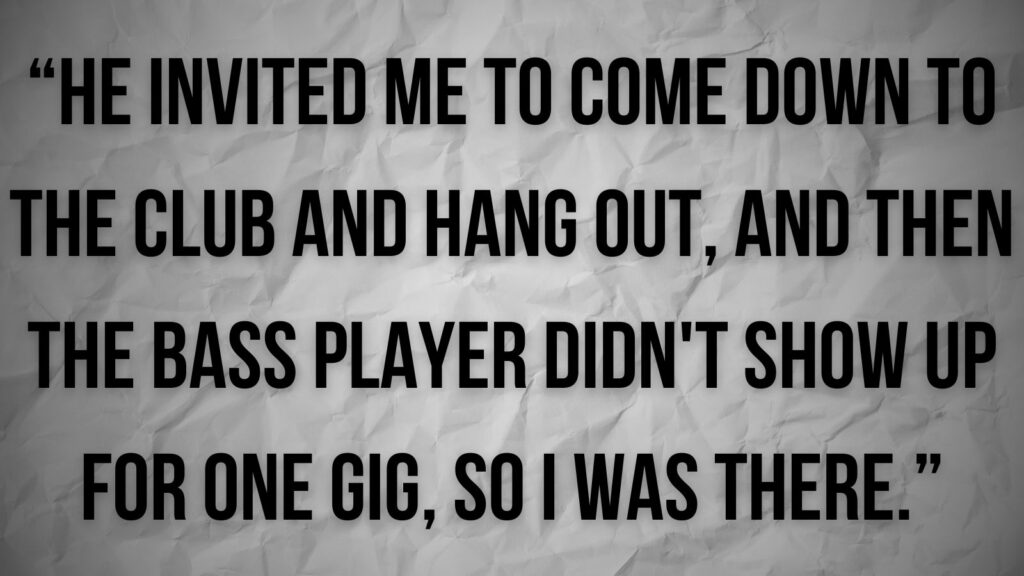Legendary guitar builder and the founder of PRS Guitars, Paul Reed Smith, discussed the importance of tonewood and all the other components on guitars that are part of the sound that we end up hearing in the end.
The tonewood discussion is incredibly complicated and divisive. At this point, there seems to be no real consensus, at least when solid-body electric guitars are in question. But Paul, on the other hand, is a very strong proponent of tonewood’s significant impact on the sonic equation.
Appearing on the recent episode of Plugged In, Sweetwater’s new podcast, he touched upon the matter while discussing the main character of any guitar. But when asked whether it’s the combination of tonewoods, Paul had a more complex explanation of things.
“I wish I could just blame it on the wood,” he explained (transcribed by Killer Guitar Rigs). One thing he tackled was the bridge and nut material. After adding that a rubber nut, for example, would completely change the sound of your instrument, he then added:
“Look, in a lot of guitars, the nut is made out of the same material you hook your toilet to your septic tank with. Do you think that’s a good idea?”
Comically exaggerated arguments aside, the PRS founder points out that the combination of different elements is what helps in creating a guitar tone. He continued:
“I mean, the industry standard in acoustic guitar is bone because those guitar makers have decided that of all the materials that they fussed with, that’s the best one. So it’s a combination of a pile of things.”
“Where the string starts to vibrate — which is the bridge — and ends vibrating — which is the nut — is incredibly important. But this long, A-weighted thing with tuning pegs and frets in different places has an impact.”
To prove his point further, Paul also shared another somewhat exaggerated example:
“I mean, if you coat the whole guitar with GE clear silicone caulk, it’s not going to vibrate very well, but the internet says it doesn’t matter. I’m bringing it up on purpose because if you exaggerate it… Okay, we’ll have a balsa wood neck and a balsa wood fingerboard that’s only three-eighths of an inch thick, and we’re going to make it a 40-inch scale.”

“Now, do you think that with that long, long neck made out of balsa wood, that guitar is going to have a good acoustic tone? All you have to do is exaggerate it to make the point, but all the things make a difference.”
On top of all this, there are other wood-related factors apart from the biological species. But the point still remains — Paul claims that it makes a big impact. He said:
“And to take the wood drying, the wood selection, and the finishing away from a guitar maker as if it doesn’t matter would be like telling somebody they’re going to make a violin in Cremona, and the woods don’t make any difference, it’s only the microphone that you mike the violin with.”
“I just don’t buy it,” he added. “I could tell you story after story after story of the internet telling us how to make guitars, and they knew better. But sometimes, they do; mostly, they don’t. It depends. It’s a very complicated equation.”
Elsewhere in the interview, Paul Reed Smith also discussed the good old “tone is in the hands” debate. This came up when the interviewer discussed sustain in guitars and how it may be tough for a player to actually extend sustain with only their playing. Paul then argued by sharing a story about Eric Clapton back in the old days:
“Look, an incredibly good guitar player can make it sound like them no matter what guitar they’re holding. You got to remember that Clapton played a [Gibson] 335 with nylon saddles for a long time, and if you change that to brass saddles — which we did in every repair shop I worked in — the guitar will always sustain more. But he was so good, it would always sound like him.”
“There’s a story of Eric Clapton sitting in with a band, and the tech was really scared because all he had was a [Fender] Bandmaster top and a single 15 [inch speaker] in a board below his work area to tune guitars.”
“He didn’t have another amp. So he turned the board around, turned the Bandmaster all the way up, and gave the guitar to Eric.”
“This is the way the story goes — I don’t know what happened, but it’s the story. They plugged it into the Bandmaster and the guy felt so relieved — from the first second, it sounded just like Eric.”
“You know, Eric Johnson sounds like Eric Johnson playing an acoustic guitar. Carlos Santana sounds like Carlos Santana no matter what. It’s in their hands, it’s in their souls, this sound is emitting from them.”
“It’s powerful stuff. What I’m trying to do is make a better tool so they can be themselves. That’s what I’m trying to do.”
Photo: chascar (Paul Reed Smith)


